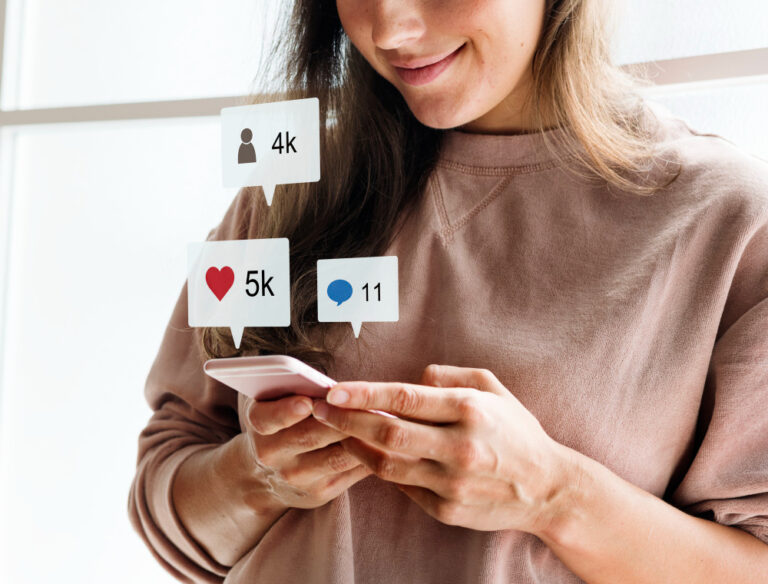The goal of each Social Media Marketing (SMM) program varies from business to business, but mainly involves building brand awareness, increasing visibility, and -through this- selling a product or service.
SMM has become a strategic tool for connecting with customers and improving online presence. But what’s the difference between verified and unverified social media profiles and pages?
Social Media: Selling vs. Connecting
Since the inception of the Internet, users have been creating data on it. Social Media is part of that digital revolution. It enables current consumers to play the role of content producers. It also became a vital source for consumers due to its vastness of information. These customers rely heavily on reviews and recommendations to decide who to engage with.

Building a healthy relationship with the customer is an ongoing process for any brand. By using Social Media to give a voice to customers or prospective customers, businesses take this a step further by making that relationship personal.
Henceforth, brands and consumers tell about themselves, their stories, values, and expectations. Not only about products or services.
Once this connection becomes personal, it will necessarily involve trustworthiness.
Customer Trust is Earned, Not Given
The most common types of relationships on Social Media are between individuals: family, friends, buddies, colleagues, etc.
When you connect and converse with one of them, you ensure it’s the right person, don’t you? You won’t engage simply by having the correct name and picture on a web page. It’s the same for your customers when they come across a social profile or page that identifies as your brand. They need to know it’s actually you.
Customer Engagement is hard to earn. It requires you to go through other pivot steps including Trust.
Perception
Interest
Trust
Engagement
Dancing With The Outspoken
If you have enough notoriety and success, communities will develop around your brand. Certain members will establish themselves as more influential than others.
The more outspoken will be the ones who often respond to others. They would even create Social Media pages and groups involving your brand.
You need to seize that chance, and cultivate these members because they can be powerful allies. On the other hand, you also need to differentiate from them clearly, and set up boundaries and tied connections. Your customers need to know whether they’re communicating with the brand or with one of its influencers or community leaders.
What does it take to verify your Social Media Marketing assets?
Twitter
Validated Account
Twitter’s old legacy verification policy is still applicable to accounts badged before November 9, 2022.
For newer accounts, learn more about the new Twitter Blue paid premium subscription.
Meta BluePrint
(Facebook & Instagram)
To be considered for a blue verified badge, your account must be: Authentic, Complete, Unique, and Notable.
YouTube
Verification Badge
If you’re a creator, an artist, a company, or a public figure, you can submit a request for a channel verification once you have 100,000 subscribers.
Google My Business
Verification
Once you claim your Business Profile, you will be able to choose between Google’s standard verification methods: Phone or text, Email, Video recording, Live video call, and Postcard.
Pinterest
Red Checkmark
You can claim your website on Pinterest, too. Verified merchants get a blue checkmark, while verified accounts or creators get a red checkmark.
TikTok
There is no verification request process. TikTok reviews accounts and gives out verification badges where it sees fit.
Snapchat
Snapchat also chooses who to verify. There is no application process. Snapchat verification is typically reserved for celebrities and influencers with massive followings.
Does your SMM meet your Customers’ Expectations?
Every brand aims to offer a worthy Customer Experience on Social Media. In addition to verifying your Social Media accounts, consumers have many other digital expectations.
To know where you are in your CX Transformation journey, you need to assess your digital features and unlock your Digital Rating.





